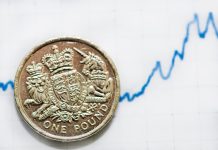USD/CAD is almost unchanged in the Thursday session, as the pair trades at 1.3430. On the release front, Canadian Building Permits posted a sharp decline of 2.5%, well short of the estimate of a 1.4% gain. In the US, unemployment claims dropped sharply to 234 thousand, easily beating the forecast of 251 thousand. The week wraps up with a host of employment indicators. Canada will publish Employment Change and the unemployment rate, while the US releases three key events – Nonfarm Employment Change, Average Hourly Earnings and the unemployment rate.
The Canadian dollar continues to struggle, and a major reason is weak oil prices. Despite OPEC cutting production levels, the world remains awash in oil, as increasing US production has offset the OPEC cuts. US Crude Inventories continue to show surpluses, most of which have been higher than the forecast. This was the case again last week, with US crude inventories posting a strong gain of 1.6 million. The indicator has posted 12 surpluses in the last 13 weeks, which has helped keep oil prices close to the $50 level.
The Federal Reserve released the minutes of its March policy meeting on Wednesday. At that meeting, the Fed raised rates a quarter-point to 0.75%, but the dovish rate statement disappointed the markets, triggering broad losses for the US dollar. In the minutes, policymakers noted upside risk to the US economy, but remained divided on whether inflation will rise to the Fed target of 2.0%. Most policymakers were in favor of taking steps to trim the $4.5 trillion balance, which has ballooned since the Fed implemented its aggressive quantitative easing program back in 2008. So what’s next for the Fed? According to the CME’s Fed Watch, the odds of a rate hike at the May meeting are just 5 percent, while the likelihood of a rate hike in June stand at 63 percent. Last week, FOMC member Eric Rosengren called for three more hikes, saying the Fed should raise rates in June, September and December. Rosengren said that employment and inflation levels were close to the Fed’s targets, and that three additional hikes were needed in order to prevent the US economy from overheating. However, a majority of FOMC members are in favor of just two more hikes this year.













